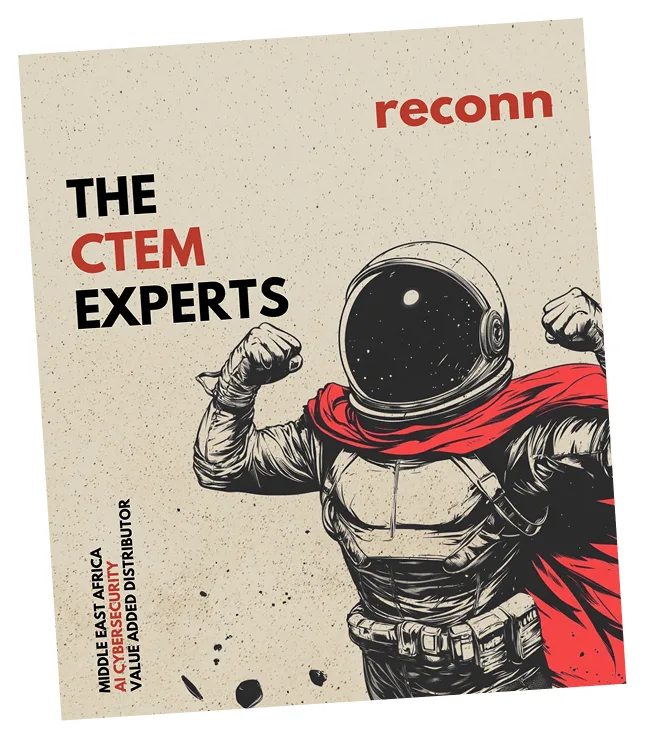Continuous Threat Exposure Management: A brief Introduction to this GARTNER terminology

What is Continuous Threat Exposure Management (CTEM)?
Continuous Threat Exposure Management (CTEM) is a proactive and continuous approach to cybersecurity, designed to help organizations continuously monitor their external attack surface and manage exposure risk effectively. Unlike traditional vulnerability management programs, which rely on periodic assessments, CTEM isn’t just about scanning for weaknesses—it is a continuous threat exposure management program that provides real-time insights into an organization’s attack surface and potential risks.
CTEM enables organizations to reduce exposure to cyber attacks by integrating threat intelligence platforms, breach and attack simulation, and cloud security posture management into their security management strategies. By focusing on identified exposure, risk-based vulnerability management, and real-world threat vectors, CTEM prioritizes security efforts based on cyber risk and potential attack likelihood.
Why is Continuous Threat Exposure Management Needed?
The threat landscape is evolving rapidly, with new breach techniques emerging daily. Traditional vulnerability management methods are insufficient in addressing modern threats, as attackers continuously refine their exploit tactics. Organizations must adopt a CTEM solution to stay ahead, leveraging management solutions that allow for:
Real-time visibility into an organization’s entire external attack surface management strategy.
Validation and exposure assessment to ensure security controls are effective.
A structured CTEM approach to tackle management process challenges dynamically.
Cyber resilience against emerging threats through continuous improvement.
Effective remediation of vulnerabilities and misconfigurations to strengthen defenses.

What Are the 5 Stages of CTEM?
According to Gartner, the five stages of CTEM ensure a comprehensive, structured, and effective approach to security:

Scoping – Identify critical assets, map attack paths, and define security objectives.
Discovery – Continuously assess internal and external systems for vulnerabilities and misconfigurations.
Prioritization – Rank security risks based on exposure risk, potential attack impact, and business context.
Validation – Conduct breach and attack simulation, penetration testing, and real-time threat analysis to test security controls.
Mobilization – Remediate security gaps and enhance security team capabilities dynamically.
Each stage of the CTEM process is based on a continuous cycle of assessment and refinement to strengthen cyber defenses and support remediation efforts.
How to Implement CTEM Successfully
Building an effective CTEM program requires organizations to:
Implement CTEM strategies that focus on risk management rather than just compliance.
Use CTEM correlates techniques to link vulnerabilities with real-world attack scenarios.
Manage cyber threats using automation, AI-driven CTEM process tools, and management efforts.
Integrate threat detection and threat intelligence platforms to enhance security insights.
Adopt continuous assessment methodologies for continuous monitoring and proactive remediation.
Automate security workflows to improve security team efficiency and effectiveness.

Best Practices for Implementing a CTEM Program
- Start Small, Scale Fast – Focus on high-value assets and expand coverage progressively.
- Combine Automated & Manual Testing – Leverage automation for scale and human expertise for deeper assessments.
- Measure & Report Continuously – Define KPIs such as Mean Time to Detect (MTTD) and Mean Time to Remediate (MTTR).
- Stay Agile – CTEM is not a one-time implementation; it evolves as threats evolve.
- Secure Buy-in from Leadership – CTEM requires investment and cultural change.
How to Transition to a CTEM Program from a Traditional Approach
Migrating from a legacy security approach to a CTEM-driven model requires a phased transition:
- Assess Your Current Security Posture – Identify gaps in your traditional approach.
- Implement Continuous Monitoring – Shift from periodic assessments to real-time scanning.
- Adopt a Threat-Led Approach – Focus on the attacker’s perspective rather than just compliance.
- Leverage Security Automation – Reduce reliance on manual processes.
- Train Teams on CTEM Best Practices – Ensure security professionals understand the shift from passive to proactive security.


Benefits of CTEM and Its Unique Role in the Middle East & Africa
The value of CTEM is especially critical in the Middle East and Africa, where threats such as nation-state attacks, regulatory complexities, and skills shortages demand an exposure management program that goes beyond traditional security methods. Organizations in the region must leverage penetration testing, real-time threat analysis, and remediation capabilities to ensure continuous exposure management.
How Can reconn Assist in Building a CTEM Program?
At reconn, we specialize in AI-driven cybersecurity solutions, empowering organizations with a comprehensive CTEM framework tailored to their industry and regulatory landscape. Our services include:
- Attack Surface Discovery & Monitoring – Identifying external and internal risks in real-time.
- Risk-Based Vulnerability Management – Prioritizing threats based on contextual business impact.
- Automated Security Validation – Simulating real-world attacks to test defenses.
- Threat Intelligence Integration – Enriching CTEM findings with actionable intelligence.
- Strategic Security Advisory – Helping organizations transition from traditional security models to CTEM-driven resilience.


Final Thoughts
Organizations can no longer rely on traditional vulnerability management strategies. A continuous threat exposure management program is essential to defend against emerging cyber threats, automate security processes, and drive continuous improvement.
Want to see how reconn can enhance your CTEM solution? Let’s connect!
frequently asked questions
FAQs
What is continuous threat exposure management?
Continuous Threat Exposure Management (CTEM) is a proactive and continuous cybersecurity approach that helps organizations assess, identify, and remediate security risks in real time. Unlike traditional vulnerability management, which relies on periodic assessments, CTEM enables organizations to continuously monitor their external attack surface, detect misconfigurations, and reduce exposure to threat actors.
At Reconn, we specialize in CTEM solutions that integrate risk-based vulnerability management, breach and attack simulation, and penetration testing to enhance security controls. Our CTEM framework empowers security teams to automate threat detection, improve cyber resilience, and stay ahead of evolving cyber threats. 🚀
What is the difference between CTEM and vulnerability management?
Traditional vulnerability management focuses on assessing and fixing vulnerabilities through periodic scans, often missing real-time threats and evolving attack techniques. It primarily relies on CVSS scores and security patches, making it a reactive process.
In contrast, Continuous Threat Exposure Management (CTEM) is a proactive and continuous approach that assesses, prioritizes, and remediates risks based on their exploitability and business impact. CTEM involves continuous monitoring, penetration testing, breach and attack simulation, and automated security validation to uncover misconfigurations and potential attack paths.
What is the Difference Between CTEM and EASM?
External Attack Surface Management (EASM) focuses on discovering, assessing, and managing an organization’s external attack surface by identifying misconfigurations, unknown assets, and exposed services that could be exploited by threat actors. EASM provides continuous monitoring of externally facing assets but does not fully assess how these exposures could be leveraged in a real-world attack scenario.
On the other hand, Continuous Threat Exposure Management (CTEM) is a broader, risk-based approach that includes EASM as one component but extends beyond discovery. CTEM involves assessing, prioritizing, validating, and remediating security risks across internal and external environments. It integrates penetration testing, breach and attack simulation, and real-time threat intelligence to continuously reduce exposure and strengthen security controls.
How is CTEM Different From Breach and Attack Simulation (BAS)?
Breach and Attack Simulation (BAS) is a security validation technique that assesses an organization’s ability to detect and respond to real-time threats by simulating cyberattacks. BAS helps security teams automate attack simulations, identify misconfigurations, and test the effectiveness of security controls. However, BAS focuses on testing defenses rather than continuously assessing and remediating risks across the entire attack surface.
Continuous Threat Exposure Management (CTEM) is a comprehensive cybersecurity strategy that includes BAS but goes beyond it. CTEM involves continuous monitoring, risk-based vulnerability management, penetration testing, and remediation to reduce exposure to evolving threats. It prioritizes risks based on business impact and provides a structured framework for long-term cyber resilience.
How is CTEM Different From Penetration Testing?
Penetration testing is a point-in-time assessment where ethical hackers assess an organization’s security by simulating real-world cyberattacks. It helps identify misconfigurations, vulnerabilities, and weaknesses in security controls, but it is not continuous and often lacks real-time remediation capabilities.
Continuous Threat Exposure Management (CTEM), on the other hand, is a proactive and continuous cybersecurity approach that assesses, prioritizes, and remediates risks dynamically. CTEM involves penetration testing as one of its components but also includes continuous monitoring, breach and attack simulation, real-time threat intelligence, and automated security validation to address potential risks as they emerge.
How is CTEM Different From RBVM?
Risk-Based Vulnerability Management (RBVM) focuses on assessing and prioritizing vulnerabilities based on their exploitability and business impact rather than just severity scores. It helps organizations remediate critical security gaps efficiently by leveraging threat intelligence and contextual risk assessment. However, RBVM primarily deals with vulnerabilities and does not provide a holistic, continuous exposure management approach.
Continuous Threat Exposure Management (CTEM), on the other hand, is a broader cybersecurity strategy that incorporates RBVM but extends beyond it. CTEM involves continuous monitoring, breach and attack simulation, penetration testing, and security validation to assess, prioritize, and remediate threats dynamically. Unlike RBVM, CTEM enables organizations to manage misconfigurations, validate security controls, and address real-time threats across the organization’s attack surface.
How is CTEM Different From Red Team Exercises?
Red team exercises are adversary simulation assessments where ethical hackers mimic threat actors to assess an organization’s defenses, test security controls, and uncover misconfigurations. These exercises provide valuable insights into potential attack vectors but are point-in-time assessments, meaning they do not offer continuous monitoring or automated remediation.
Continuous Threat Exposure Management (CTEM) is a proactive and continuous security strategy that includes red teaming but extends beyond it. CTEM involves ongoing assessment, prioritization, and remediation of security risks using breach and attack simulation, penetration testing, risk-based vulnerability management, and real-time threat detection. Unlike red team exercises, which focus on specific scenarios, CTEM enables organizations to maintain continuous exposure management and reduce exposure to evolving cyber threats.